Determining the “most famous” statues in the world can be subjective, as fame can be measured in various ways like cultural impact, historical significance, or popular recognition. However, some statues consistently top the list due to their iconic status and universal appeal. And, here we will explore a few contenders for the title of “most famous statues in the world”.
From the ancient wonders that whisper tales of eras to modern marvels that reflect contemporary aspirations, each statue in this collection lets you to explore the artistry, history, and significance etched into its form. So, let’s delve into the stories, legends, and cultural impact behind these monumental works of art, celebrating the rich diversity and shared humanity they represent. Welcome to a global expedition that unveils the magnificence of the world’s most iconic statues.
SEE ALSO:
- Amazing Facts, Figures and World Records of Burj Khalifa
- It’s Not Photo Editing, This Coffee Shop in Seoul Makes You Feel Like You’re in a Cartoon
- 26 Most Creative and Beautiful Statues and Sculptures in the World
1. Bust Of Nefertiti
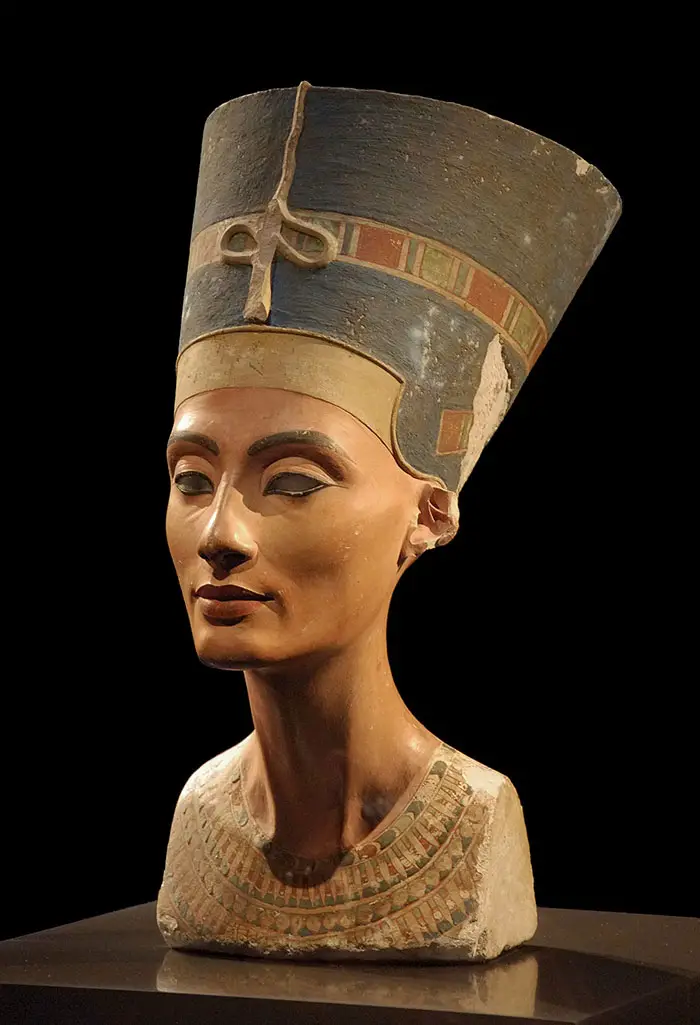
The Bust of Nefertiti is a renowned ancient Egyptian sculpture dating back to the 14th century BCE. Created by the court sculptor Thutmose, the limestone and plaster bust depicts the queen and Great Royal Wife Nefertiti. Known for its exquisite craftsmanship and lifelike portrayal, the bust showcases Nefertiti’s graceful features, including her elegant neck and intricate headdress. Discovered in 1912 in Amarna, Egypt, it is now housed in the Neues Museum in Berlin, Germany, where it continues to be celebrated for its beauty and historical significance. The sculpture is considered a symbol of the artistry and elegance of ancient Egyptian civilization.
2. Great Sphinx Of Giza
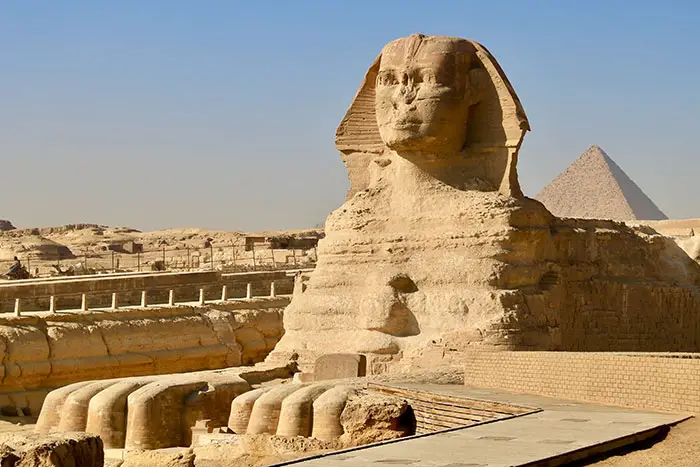
The Great Sphinx of Giza is a colossal limestone statue with the body of a lion and the head of a pharaoh, believed to represent Pharaoh Khafre. Located on the Giza Plateau in Egypt, near the Pyramids of Giza, it stands as one of the most iconic and enigmatic ancient sculptures. The Sphinx serves as a symbol of ancient Egyptian civilization and mystery, captivating visitors with its majestic presence and guarding the secrets of the ancient world.
3. The Thinker
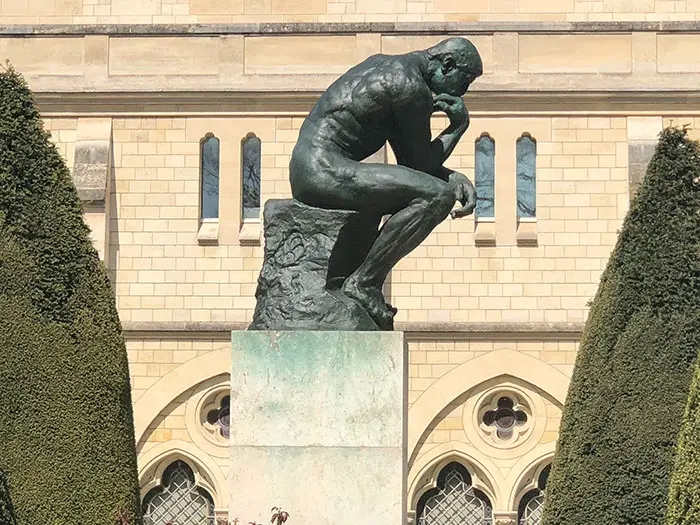
The Thinker, located in the Musée Rodin in Paris, is a bronze sculpture created by Auguste Rodin. Depicting a seated man deep in contemplation, the statue is renowned for its powerful portrayal of intellectual reflection. Originally part of Rodin’s larger work, “The Gates of Hell,” The Thinker has become an iconic symbol of philosophical introspection. With a muscular physique and a furrowed brow, the statue captures the intensity of thought, inviting viewers to ponder the complexities of the human mind.
4. The Statue Of David
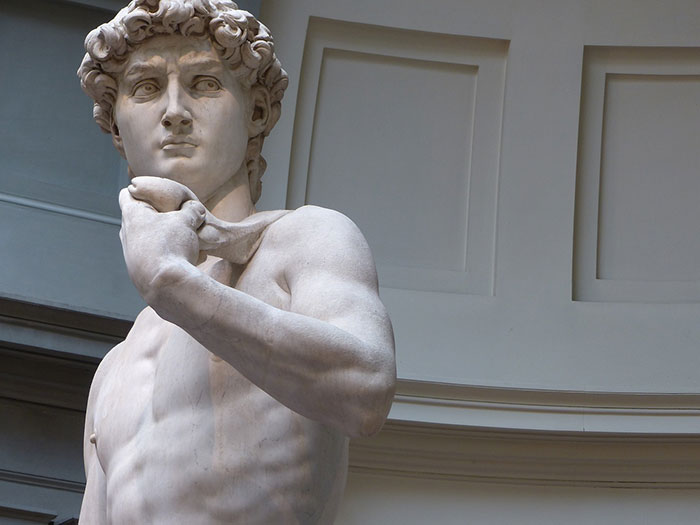
The Statue of David is a renowned marble sculpture created by Michelangelo during the Italian Renaissance. Housed in the Galleria dell’Accademia in Florence, Italy, the statue depicts a young and idealized biblical hero, David, who defeated the giant Goliath. Standing at over 17 feet tall, the sculpture is celebrated for its exceptional detail, lifelike anatomy, and the sense of strength and concentration exuded by the central figure. Michelangelo’s David is considered a pinnacle of Renaissance art, showcasing the artist’s mastery of the human form and his ability to transform raw marble into a symbol of human potential and triumph.
5. Winged Victory Of Samothrace
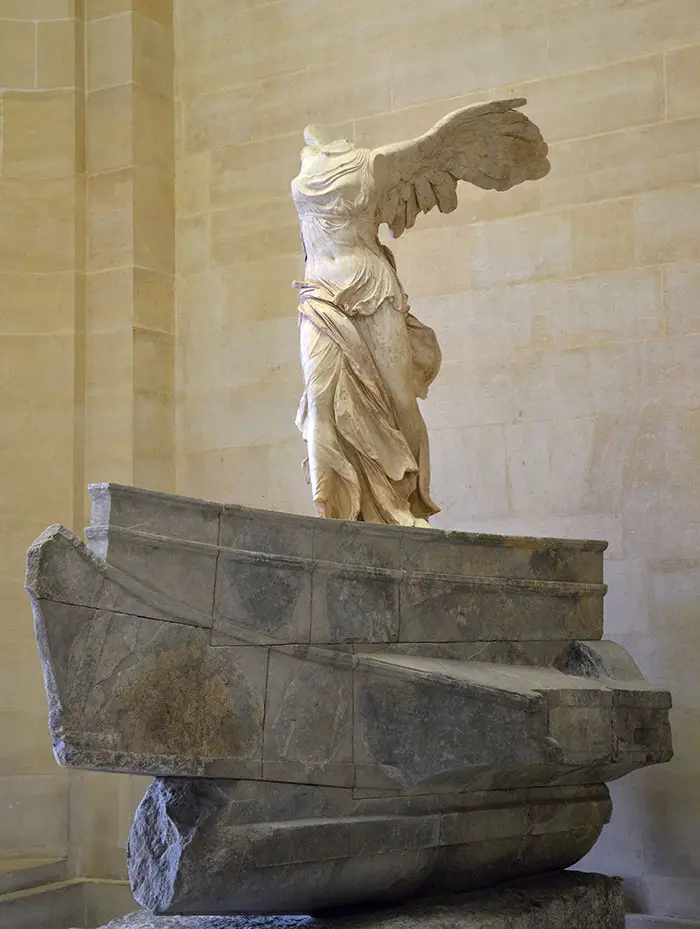
The Winged Victory of Samothrace, also known as the Nike of Samothrace, is a renowned ancient Greek sculpture dating back to the 2nd century BC. Depicting the Greek goddess Nike, the statue stands on the prow of a ship with her wings outstretched, creating a sense of dynamic movement. Carved from marble, the statue was discovered on the island of Samothrace in 1863 and is celebrated for its striking portrayal of victory and grace. Currently housed in the Louvre Museum in Paris, the Winged Victory of Samothrace is considered a masterpiece of Hellenistic art, showcasing both technical prowess and emotional intensity.
6. The Terracotta Army
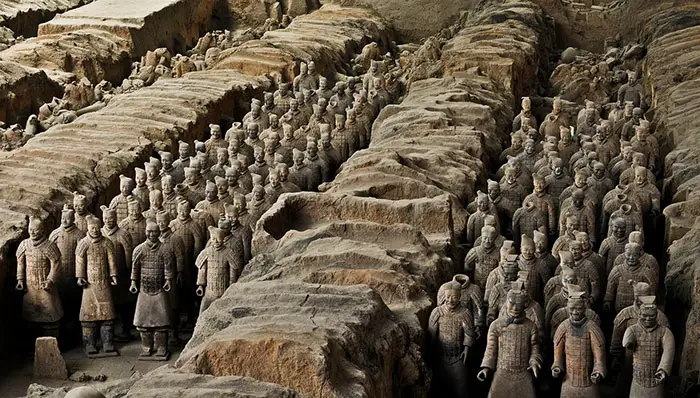
The Terracotta Army is a vast collection of life-sized clay soldiers, horses, and chariots discovered in the mausoleum of China’s first emperor, Qin Shi Huang, in Xi’an. Crafted over two millennia ago, these intricately detailed and individually sculpted figures stand as a remarkable testament to ancient Chinese artistry and the emperor’s quest for an afterlife guarded by an army. The discovery of the Terracotta Army in 1974 has offered unparalleled insights into the military, cultural, and artistic achievements of the Qin Dynasty.
7. Little Mermaid
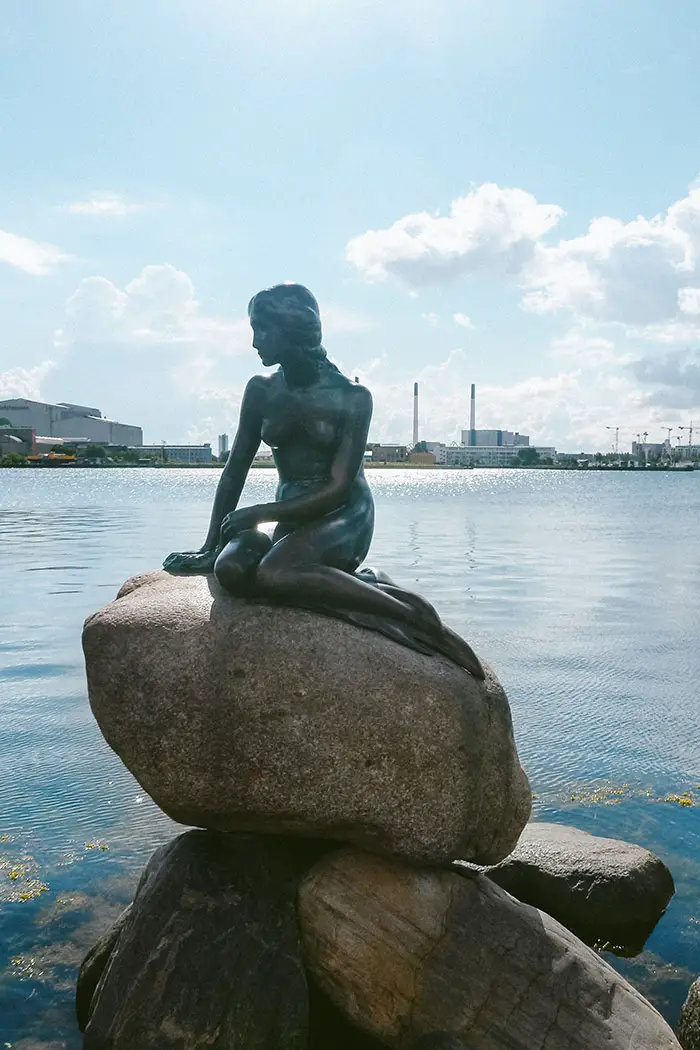
The Little Mermaid statue in Copenhagen, Denmark, is a petite yet iconic bronze sculpture resting on a rock along the Langelinie promenade. Inspired by Hans Christian Andersen’s fairy tale, the statue depicts a mermaid gazing wistfully toward the sea. Despite its modest size, the Little Mermaid is a beloved symbol of Danish folklore and a popular tourist attraction, embodying the enchanting allure of Andersen’s timeless narrative. Visitors often flock to admire this enchanting sculpture, which has become an enduring emblem of Copenhagen’s cultural heritage.
8. Christ The Redeemer
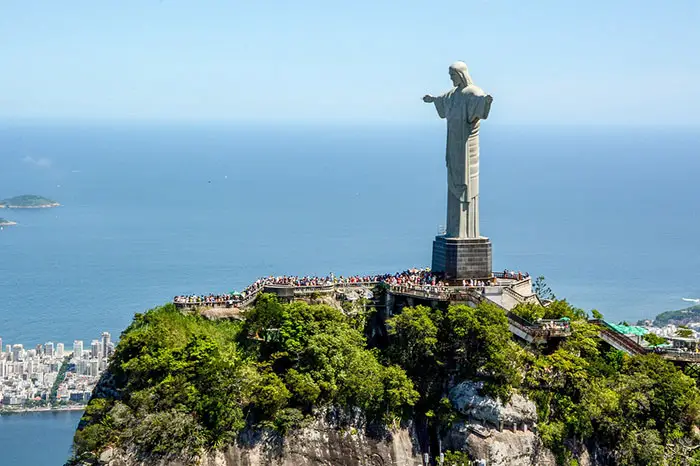
guertzen
The Christ the Redeemer statue is an iconic symbol overlooking Rio de Janeiro, Brazil. Perched atop the Corcovado mountain, this colossal statue of Jesus Christ with outstretched arms stands at 98 feet (30 meters) tall. Completed in 1931, it is one of the New Seven Wonders of the World. The statue represents not only Brazil’s cultural heritage but also serves as a powerful symbol of faith and welcomes visitors from around the globe to admire its awe-inspiring presence against the backdrop of the vibrant city below.
9. Moai
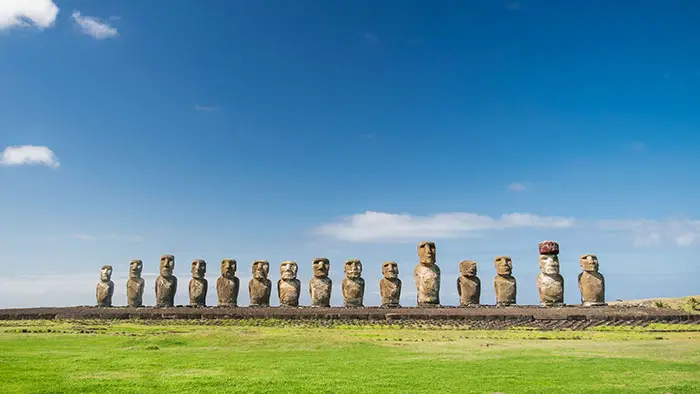
The Moai statues are a collection of massive stone figures located on Easter Island, Chile. Carved by the Rapa Nui people, these enigmatic sculptures feature distinctive facial features and elongated bodies. The Moai are scattered across the island, standing as a testament to the ancient Polynesian culture and continue to captivate visitors with their mysterious origins and haunting beauty.
10. Augustus Of Prima Porta
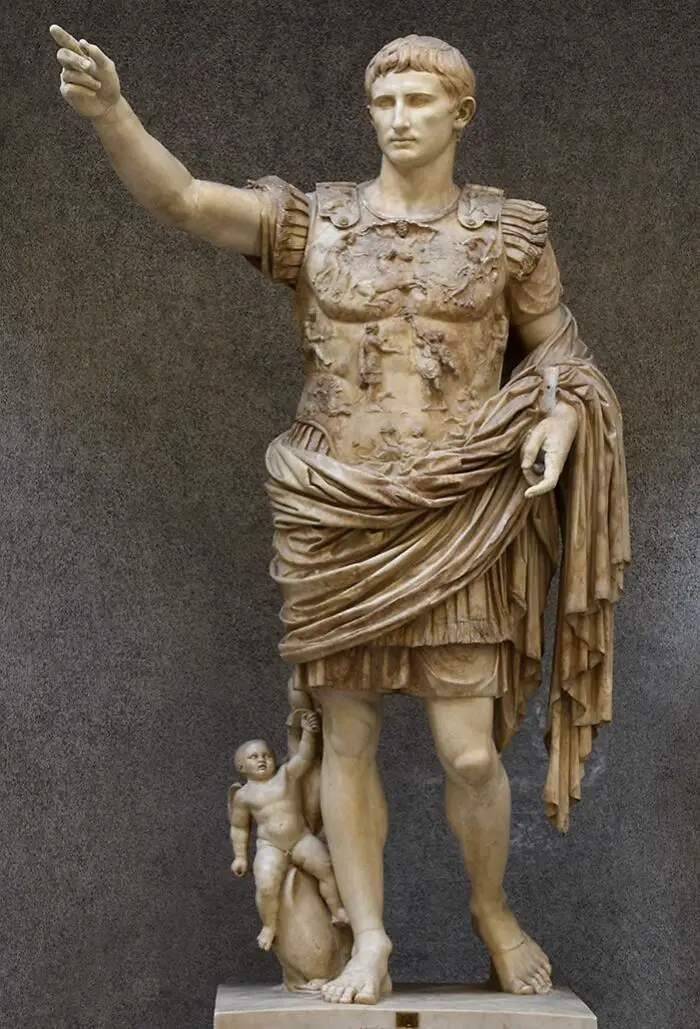
The “Augustus of Prima Porta” is a renowned marble statue of Emperor Augustus, dating back to the early 1st century AD. Discovered in 1863 in the Villa of Livia near Rome, the statue showcases Augustus in military attire, emphasizing his statesmanship and divine association. Standing 2.03 meters tall, the intricately carved artwork serves as a powerful representation of Augustus’ political and propagandistic ideals, portraying him as a leader, diplomat, and bringer of peace to the Roman Empire. The statue is admired for its realistic details, symbolic elements, and its historical significance as a visual embodiment of Augustus’ reign.
11. The Leshan Giant Buddha
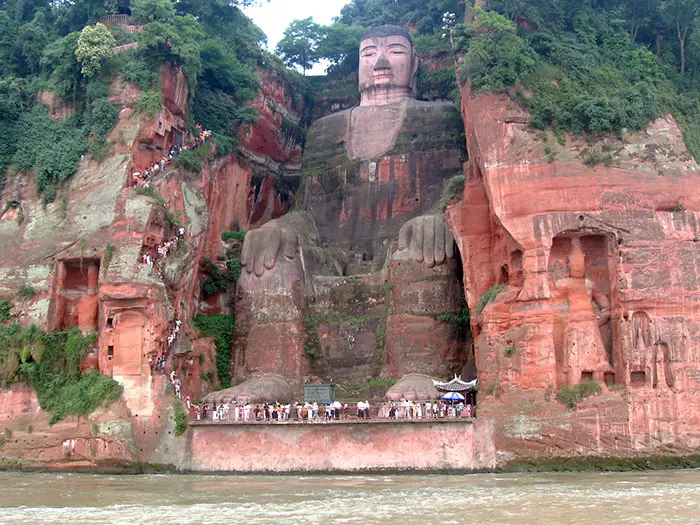
The Leshan Giant Buddha is a colossal stone statue situated near Leshan City in Sichuan Province, China. Carved into the cliff face at the confluence of the Minjiang, Dadu, and Qingyi rivers, this monumental Buddha stands at a towering height of 71 meters (233 feet). Created during the Tang Dynasty, the statue is an extraordinary example of ancient Chinese craftsmanship. Its serene expression and intricate details make it not only a cultural and religious symbol but also a UNESCO World Heritage site, drawing visitors from around the world to witness the awe-inspiring presence of one of the largest Buddha sculptures in the world.
12. Capitoline Wolf
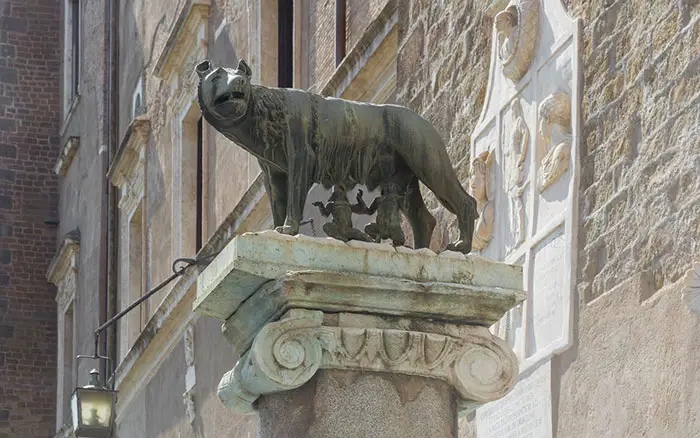
The Capitoline Wolf is an ancient bronze sculpture depicting a she-wolf suckling twin infants, Romulus and Remus. A symbol of Rome’s legendary founding, the statue is an iconic representation of maternal care and the city’s mythical origins. Historically significant, it stands as a powerful emblem of Roman mythology and has become an enduring symbol of the eternal city.
13. Moses
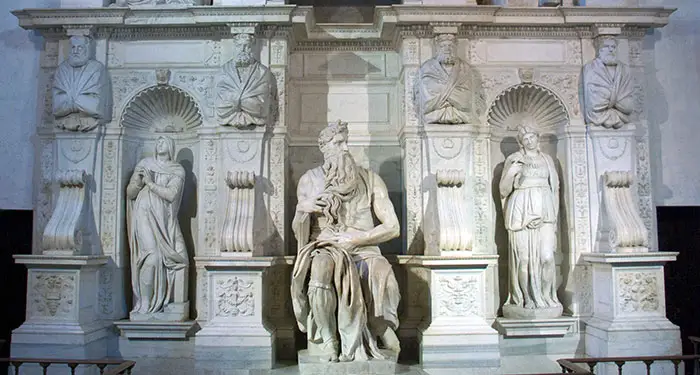
The Moses statue is a renowned sculpture created by Michelangelo, located in the Basilica di San Pietro in Vincoli (Basilica of Saint Peter in Chains) in Rome, Italy. Carved from marble, the statue depicts the biblical figure Moses with a majestic and powerful presence. Completed in the early 16th century, Michelangelo’s Moses is celebrated for its intricate details, particularly the sculptor’s mastery in conveying intense emotion and lifelike realism. The statue captures Moses in a seated position, holding the Tablets of the Law, exuding a sense of strength and contemplation that has made it one of the artist’s most revered works.
14. Discobolus (Discus Thrower)
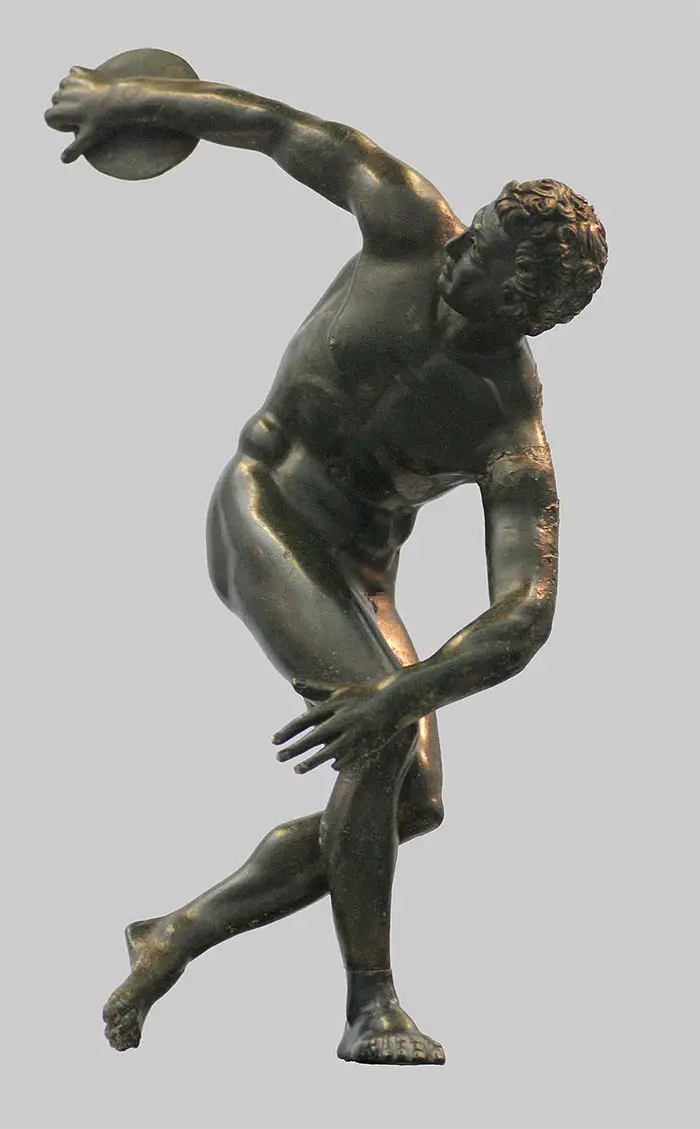
The Discobolus, also known as the Discus Thrower, is a renowned ancient Greek sculpture that captures the moment of a discus thrower in action. Created by the sculptor Myron during the Classical period (around 460–450 BCE), the statue embodies the idealized athletic form and displays a harmonious balance of tension and grace. Lost to history, the original bronze statue is known through Roman copies and is celebrated for its depiction of athleticism and the pursuit of physical perfection in ancient Greek culture. The Discobolus stands as a timeless representation of the human body’s beauty, frozen in the dynamic pose of an athlete engaged in a competitive sport.
15. Terrace Of The Lions
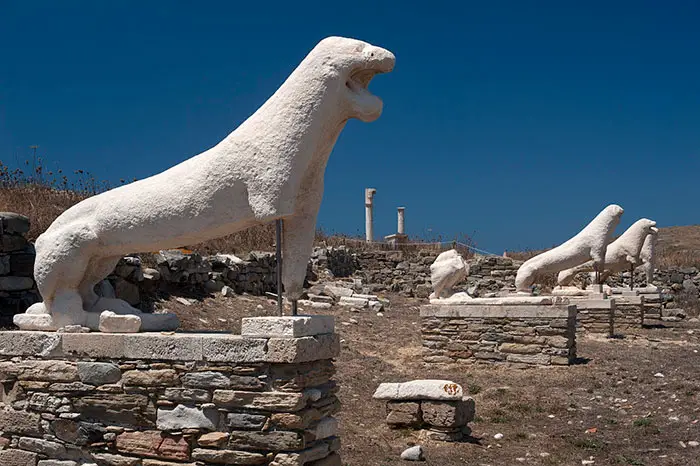
The Terrace of the Lions is a historic site located on the island of Delos in Greece. It features a row of marble lions sculpted over 2,500 years ago, standing or sitting in a majestic procession. Originally dedicated to the god Apollo by the people of Naxos, the Terrace of the Lions is an iconic representation of ancient Greek art and symbolism. Though weathered by time, these awe-inspiring lions continue to command attention, offering a glimpse into the rich cultural and religious heritage of Delos.
16. Lincoln Memorial Statue
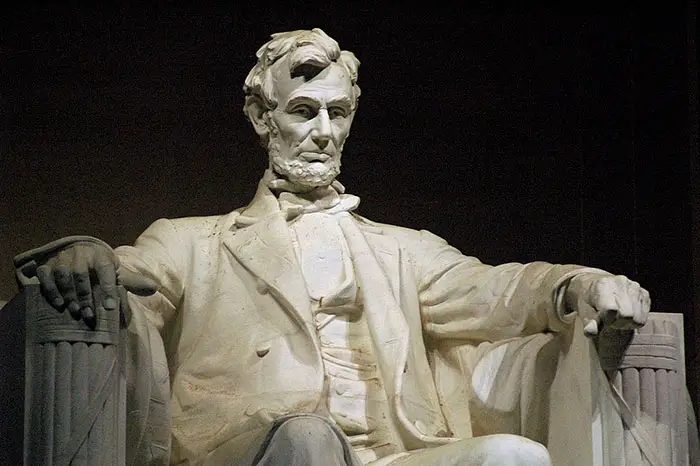
The Lincoln Memorial Statue is a colossal seated sculpture of Abraham Lincoln, the 16th President of the United States. Located within the Lincoln Memorial in Washington, D.C., the statue depicts Lincoln in a contemplative pose, symbolizing his leadership during the American Civil War. Designed by sculptor Daniel Chester French and dedicated in 1922, the statue is 19 feet tall and represents a powerful tribute to one of America’s most revered presidents. The seated figure exudes a sense of gravitas and is surrounded by inscriptions of Lincoln’s iconic speeches, making it a poignant and enduring symbol of democracy and freedom.
17. Equestrian Statue Of Marcus Aurelius
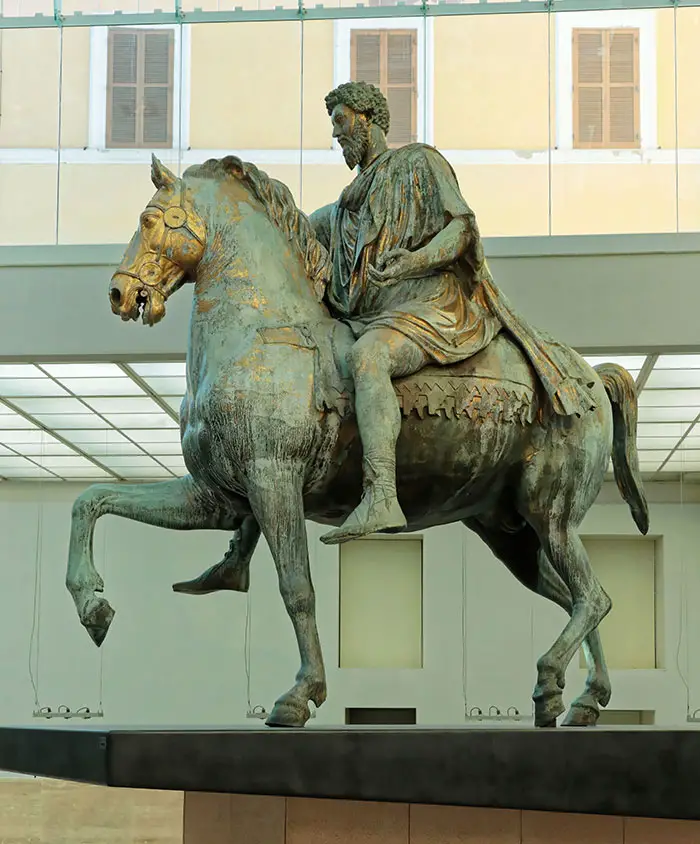
The Equestrian Statue of Marcus Aurelius is a majestic bronze sculpture located on the Capitoline Hill in Rome, Italy. Created in the 2nd century AD, the statue depicts the Roman Emperor Marcus Aurelius astride a horse, showcasing imperial power and military prowess. Renowned for its lifelike detail and expressive artistry, the statue is a rare surviving example from antiquity. Despite the passage of centuries, the Equestrian Statue of Marcus Aurelius remains a captivating symbol of Roman leadership and artistic achievement.
18. Statue Of Liberty
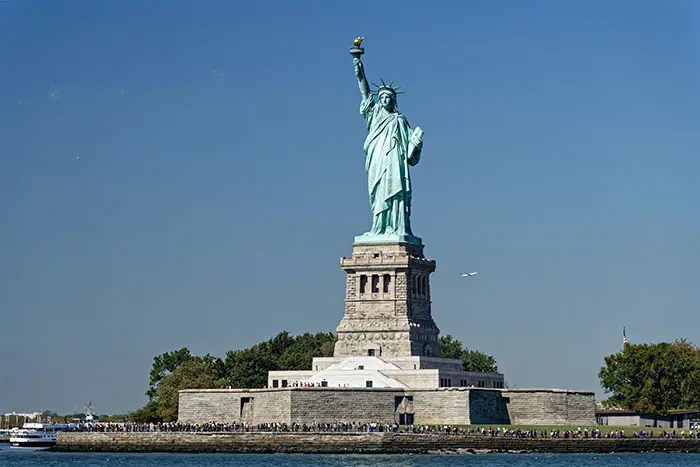
The Statue of Liberty, situated in New York Harbor, is a symbol of freedom and democracy. Standing at 305 feet, this colossal statue features Lady Liberty holding a torch aloft and welcoming visitors from around the world. A gift from France in 1886, the statue has become an enduring icon of the United States, representing hope, liberty, and the pursuit of a better life.
19. The Statue Of Unity
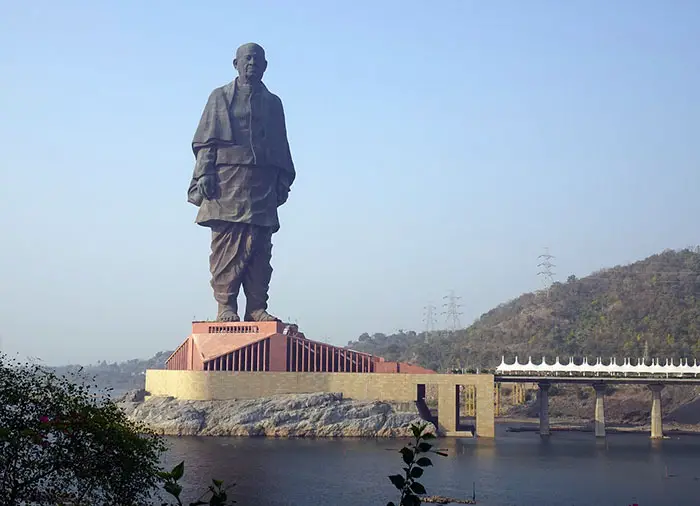
The Statue of Unity, a colossal bronze statue standing at an imposing 182 meters (597 feet), is a monumental tribute to Vallabhbhai Patel, a key figure in India’s struggle for independence and the country’s first Deputy Prime Minister and Home Minister. Located in the Indian state of Gujarat, near the Sardar Sarovar Dam, this architectural marvel was inaugurated on October 31, 2018. The statue symbolizes unity, strength, and the pivotal role Patel played in unifying India post-independence. With its breathtaking height and intricate detailing, the Statue of Unity has quickly become an iconic landmark on the global stage.
20. Christ Of The Abyss
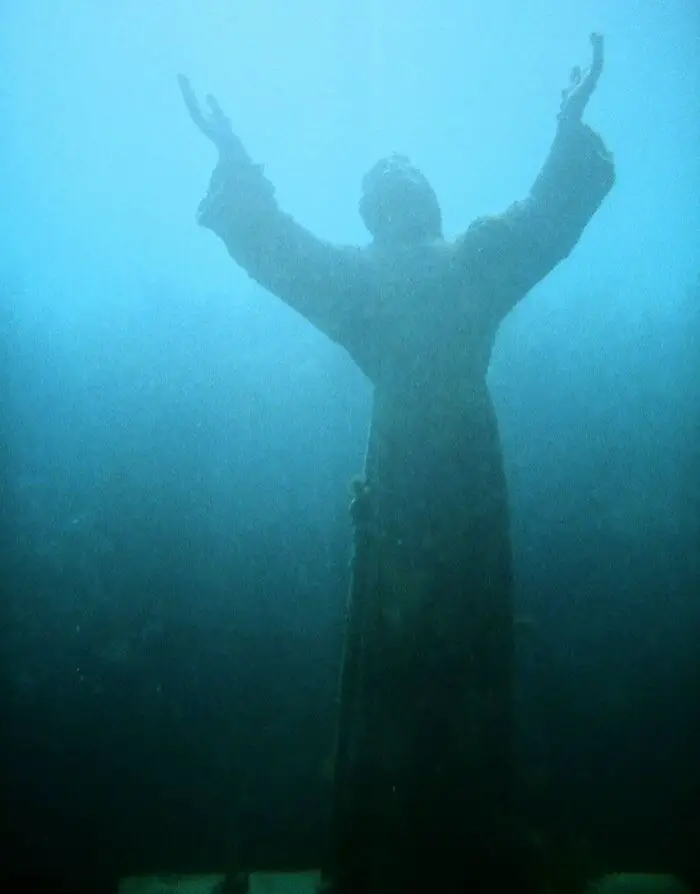
Christ of the Abyss is a submerged bronze statue depicting Jesus Christ. Located in the Mediterranean Sea near the Italian Riviera, this captivating sculpture stands on the ocean floor, welcoming divers to a unique and spiritually inspired underwater experience. Placed in 1954, the statue symbolizes peace and serves as a poignant tribute to those who lost their lives at sea. With outstretched arms, Christ of the Abyss remains a powerful symbol of hope and reverence beneath the waves.
21. Horses Of Saint Mark
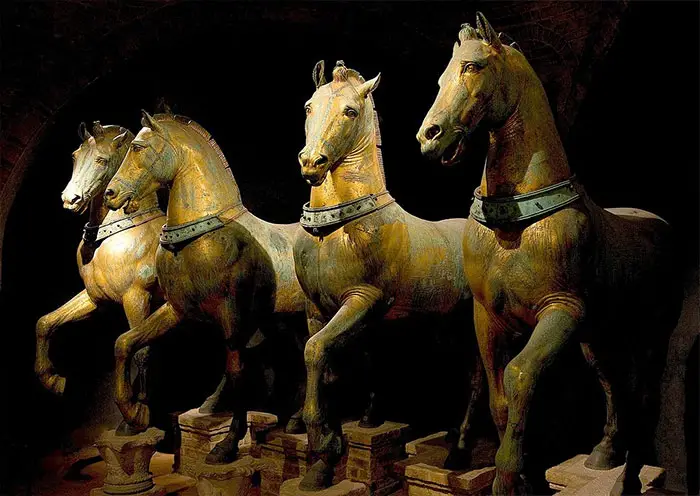
The Horses of Saint Mark, also known as the Triumphal Quadriga, are a set of four ancient bronze horses that once adorned the Hippodrome of Constantinople. Believed to be of ancient Greek or Roman origin, these exquisite sculptures were later moved to Venice, where they became iconic symbols of St. Mark’s Basilica. Renowned for their artistic beauty and historical significance, the statues are now housed inside the basilica, while replicas stand on the balcony overlooking the famous St. Mark’s Square. The Horses of Saint Mark are revered as masterpieces of classical art and enduring emblems of Venice’s rich cultural heritage.
22. Apollo Belvedere
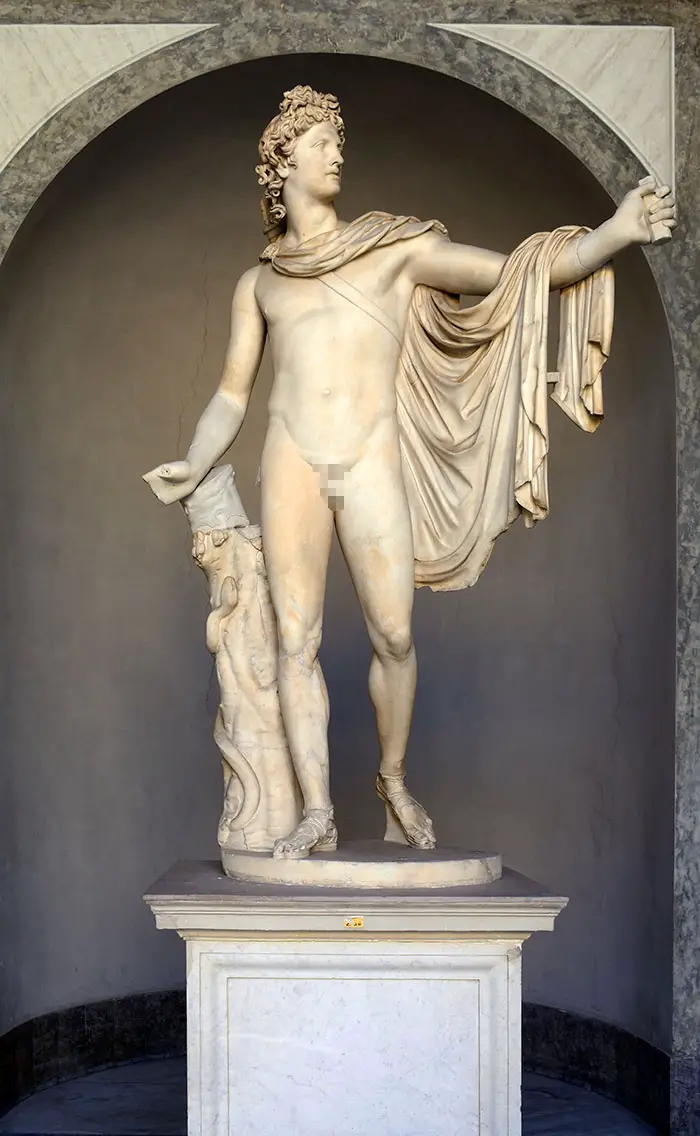
The Apollo Belvedere is an ancient marble sculpture representing the Greek god Apollo. Believed to be a Roman copy of a lost Greek bronze original, the statue is renowned for its idealized depiction of youthful beauty and grace. Apollo is portrayed standing in a classical contrapposto pose, with a poised yet dynamic stance. The statue is part of the Vatican Museums’ collection, where it continues to captivate visitors with its timeless elegance and artistic excellence.
23. Boxer At Rest
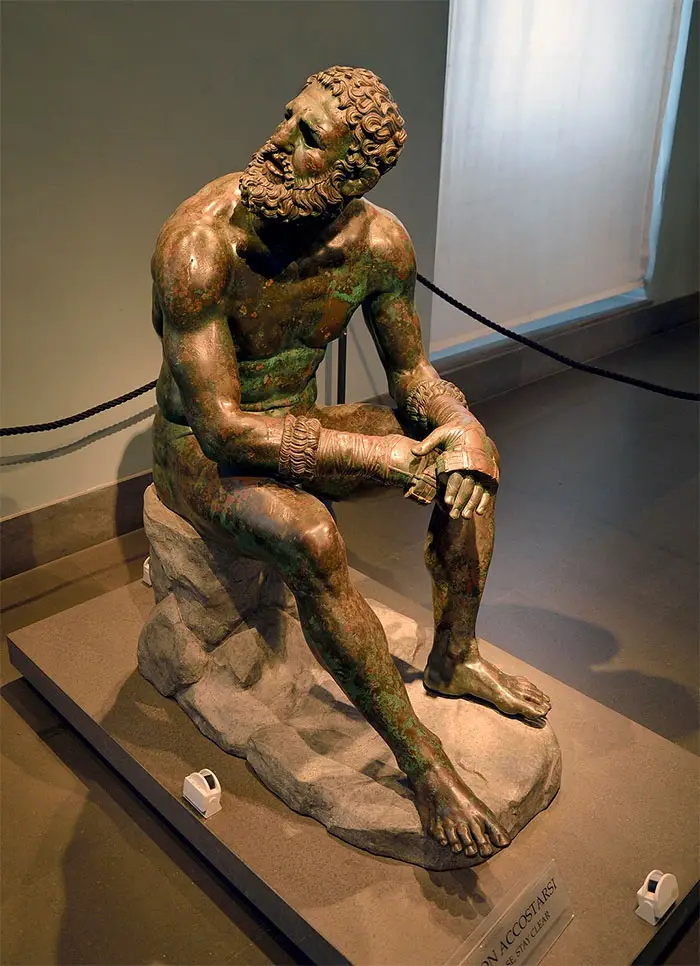
The “Boxer at Rest” is a renowned ancient Greek bronze statue depicting a seated boxer in a state of repose. Created in the Hellenistic period (circa 330-50 BCE), this masterpiece showcases the detailed realism and emotional depth characteristic of the era. The sculpture captures the boxer’s exhaustion and battered physique, providing a poignant glimpse into the physical and emotional toll of ancient athletic endeavors. The Boxer at Rest is celebrated for its exceptional craftsmanship, portraying the human experience with a level of realism that transcends time.
24. Spring Temple Buddha
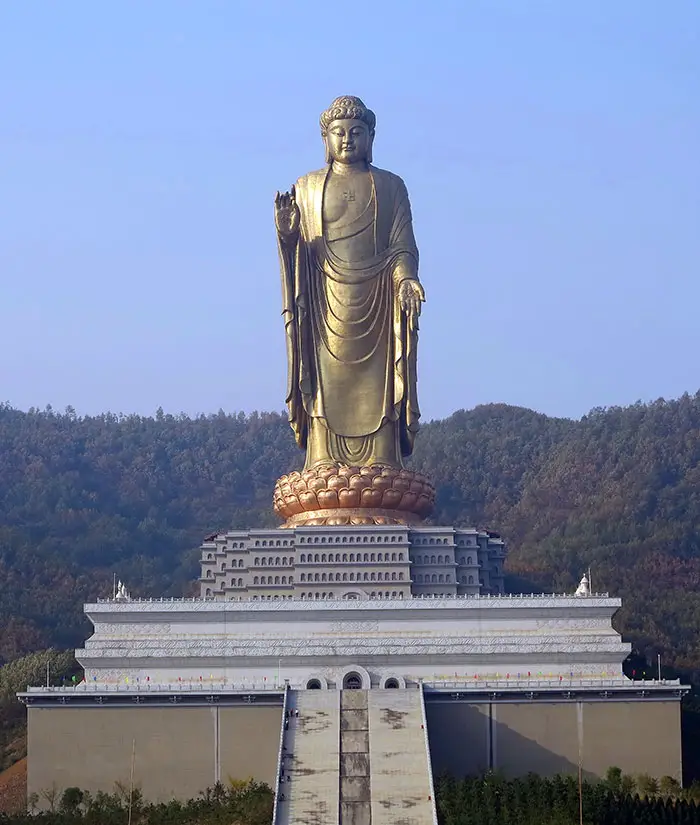
The Spring Temple Buddha is a colossal statue located in the Henan province of China. Completed in 2002, it stands as the tallest Buddha statue in the world, reaching a height of 128 meters (420 feet). The statue depicts Vairocana Buddha and is surrounded by a vast complex that includes a temple, museum, and beautiful landscapes. The Spring Temple Buddha is a remarkable testament to Chinese Buddhist artistry and engineering prowess, attracting visitors from around the globe to marvel at its grandeur.
25. Olmec Colossal Heads
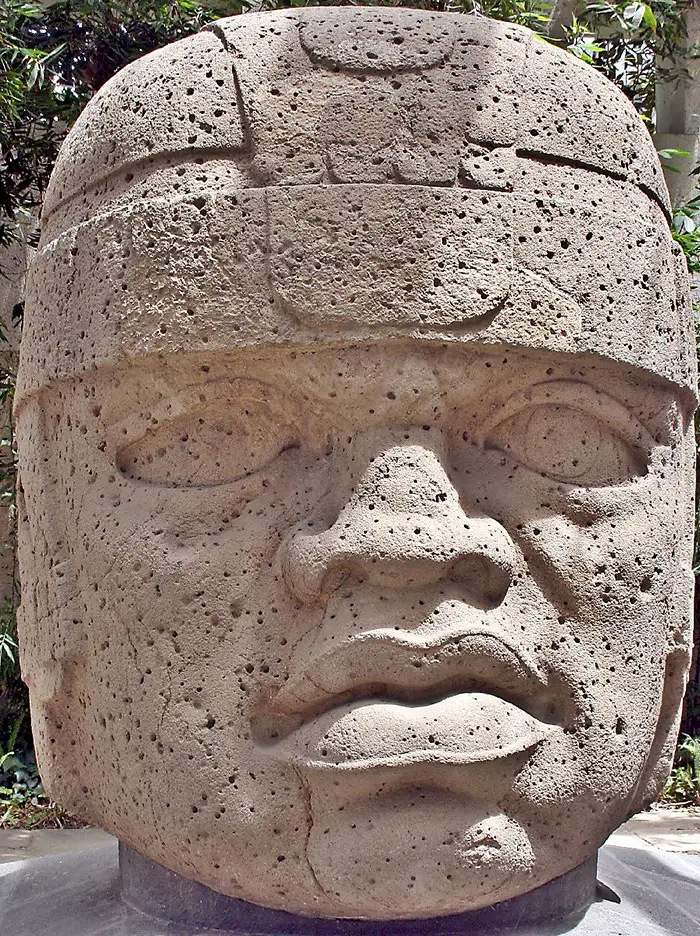
The Olmec Colossal Heads are a collection of massive stone sculptures created by the ancient Olmec civilization in Mesoamerica. Carved from basalt, these heads depict distinct human faces with unique features, including prominent lips, flattened noses, and stylized headdresses. Dating back to around 1400 to 400 BCE, these colossal heads are considered one of the Olmecs’ most iconic artistic achievements. The purpose and significance of these colossal heads remain a subject of scholarly debate, but they are widely believed to represent Olmec rulers or deities, serving as powerful symbols of cultural identity and authority.
26 Ecstasy Of Saint Teresa
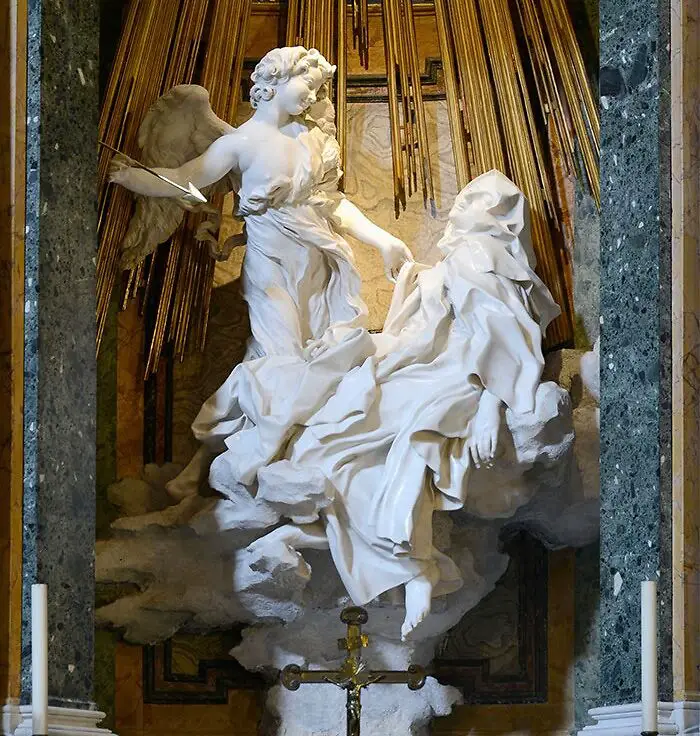
The “Ecstasy of Saint Teresa” is a Baroque masterpiece sculpted by Gian Lorenzo Bernini in the 17th century. Housed in the Cornaro Chapel in Rome’s Santa Maria della Vittoria, the sculpture depicts Saint Teresa in a state of divine ecstasy. The dramatic work captures the moment of spiritual rapture as the saint experiences a mystical encounter with an angel, symbolizing her union with the divine. The sculpture is renowned for its emotional intensity, intricate detailing, and the skillful use of light and shadow, showcasing Bernini’s exceptional talent in conveying the profound and transcendent in art.
27. Maman
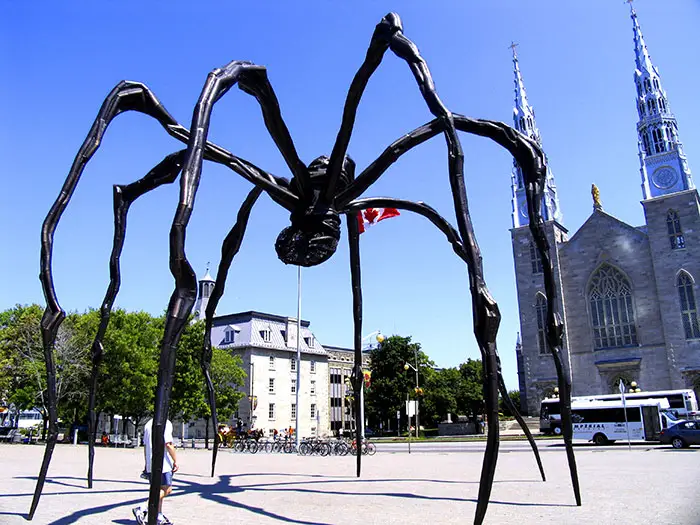
“Maman” is a monumental bronze sculpture created by Louise Bourgeois. Standing at over 30 feet tall, the statue depicts a spider, with its spindly legs supporting a sac containing marble eggs. The title, “Maman,” means “Mother” in French, and the sculpture is a tribute to Bourgeois’ mother. Installed in various locations worldwide, “Maman” is a striking and thought-provoking piece that evokes both awe and contemplation.
28. The Angel of the North
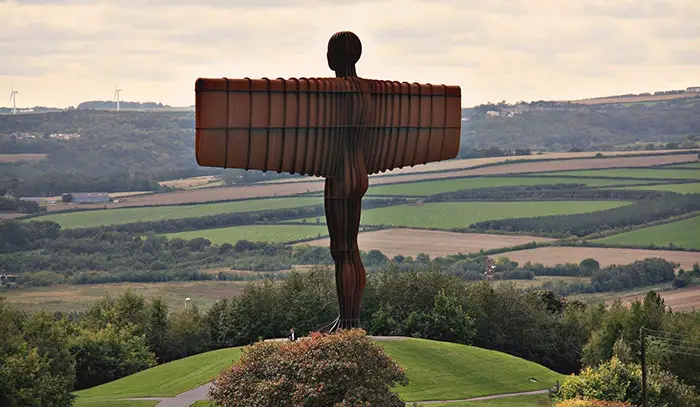
This colossal steel sculpture of an angel with outstretched wings stands proudly at 66 feet (20 meters) tall with a wingspan of 177 feet (54 meters) atop a hill overlooking Gateshead in England, the sculpture consists of a series of curved steel plates that form the shape of an angel with outstretched wings. It’s become a powerful symbol of the North, regeneration, and the industrial heritage of the region. Created by artist Antony Gormley, the Angel of the North has become an iconic symbol of the region and is one of the largest angel sculptures in the world. It was unveiled in 1998 and serves as a striking example of public art, drawing visitors with its imposing yet graceful presence against the Northern English skyline.
29. Mount Rushmore
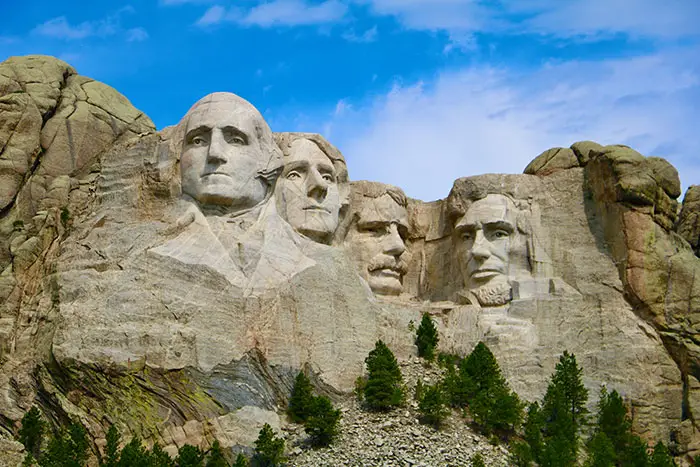
Mount Rushmore, located in the Black Hills of South Dakota, USA, is a colossal sculpture carved into the granite face of the mountain. Completed in 1941, the monument features the faces of four iconic U.S. presidents: George Washington, Thomas Jefferson, Theodore Roosevelt, and Abraham Lincoln. Each face stands approximately 60 feet tall, symbolizing key aspects of American history and leadership. Mount Rushmore is a national memorial and a symbol of American democracy, attracting millions of visitors each year.
30. The Statues Of Mount Nemrut
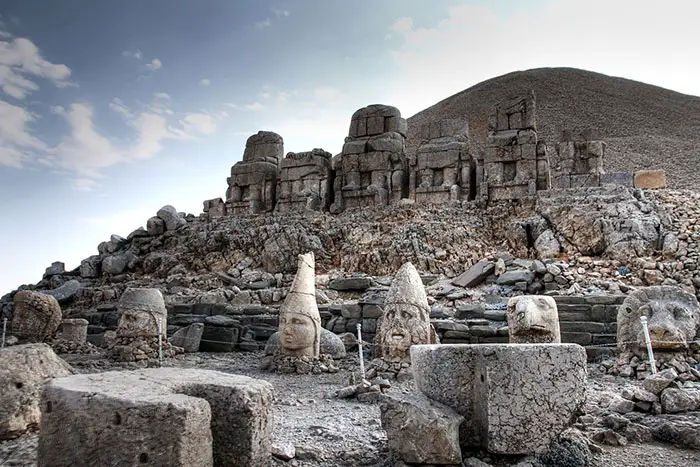
The Statues of Mount Nemrut, located in southeastern Turkey, comprise a unique and ancient monumental site. Built during the first century BC by King Antiochus I Theos of Commagene, the mountain is adorned with colossal statues and stone structures. At the summit, large statues of gods and kings are arranged in a grandiose setting, overseeing a sanctuary where rituals and ceremonies once took place. These remarkable sculptures, despite facing centuries of weathering and natural forces, continue to awe visitors with their imposing presence, offering a glimpse into the rich historical and cultural tapestry of the region.
These are just a few examples, and the list could go on, with more notable mentions. Each statue tells a story, reflects a culture, and evokes emotions, making them all worthy of appreciation and recognition.
Ultimately, the “most famous” statue is a matter of personal preference and historical context. However, these iconic figures undoubtedly hold a special place in the world’s imagination and continue to inspire awe and wonder.
Add your favorites in the comments down below.
Related: 15 Artworks That Only A Student In Complete Boredom Can Do During Class (Open list) (15 submissions)



Comments